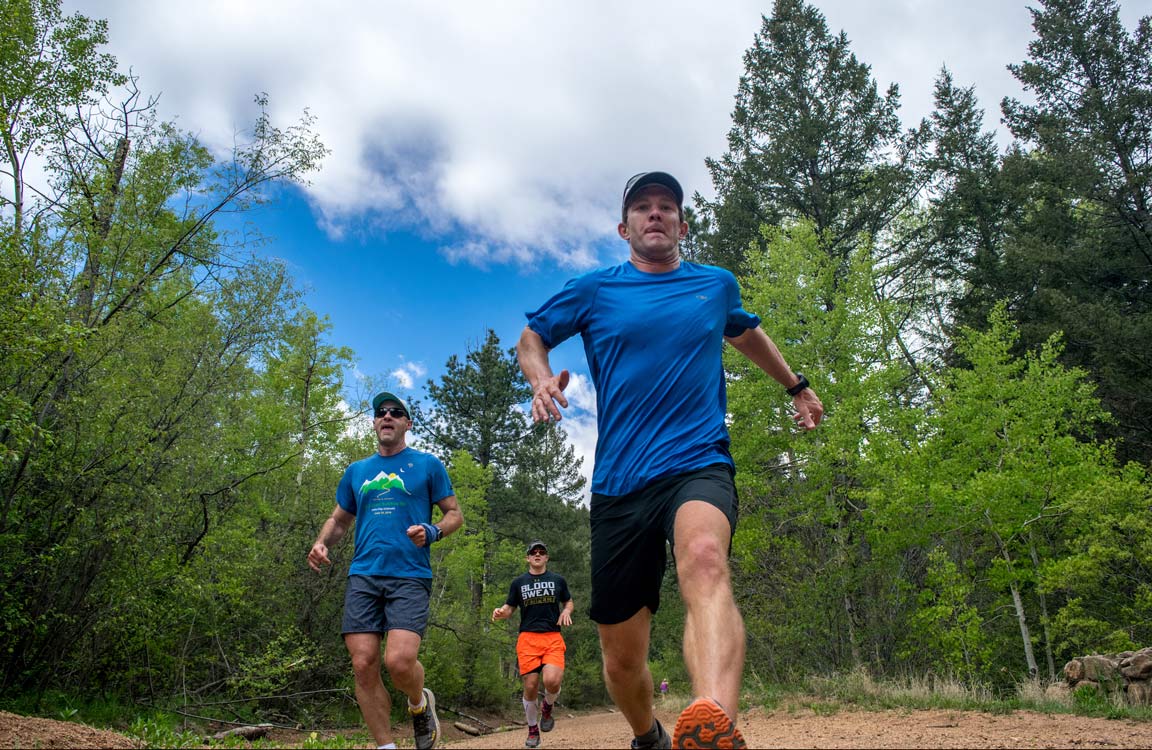
How to Reduce Braking Forces to Avoid Running Injuries
By Adam St. Pierre
CTS Ultrarunning Coach
I don’t run with headphones… ever. No music, no podcasts, no audiobooks. I like to have all of my senses “tuned in”, especially my hearing. Listening to the sound of your own running can help you to remain injury free, and here’s how!
When you run, you can hear your feet strike the ground with each stride. In general, a loud foot strike indicates a large impact force. Many runners use cues like “run quietly” or “run like a ninja” to help them remember to reduce the overall impact force of running. But overall impact force is not the only variable in running injuries; how that force is applied to the body is just as important. The body can adapt to forces and get stronger to tolerate them, but some forces are not well tolerated by the body. In running, horizontal forces (I think of them as shear forces) frequently lead to injury.
A recent study by Napier et. Al. at the University of British Columbia and the Fortius Institute in Canada found a strong association between Peak Braking Force (aka horizontal impact force) and running related injury. The study took 65 runners and measured a number of biomechanical variables. Then they tracked those runners as they underwent a 15-week half marathon training program. The authors tracked injuries among the runners and looked for difference between the injured and uninjured runners. They found the injured runners tended to have higher peak braking force than the runners who did not get injured.
Detecting Braking Force
Scuffing is an easily discernible auditory manifestation of peak braking forces. A scuffing sound indicates that the foot is contacting the ground while it is still moving forward, resulting in a horizontal shear force in the opposite direction you are trying to run, hence, a braking force! If you happen to be a scuffer, it’s important to stop!
How to Stop Scuffing
Mental cues are useful tools for changing behavior. Some runners eliminate scuffing by thinking of lifting their knees higher in front of them. For others, thinking of “pawing back” or “landing with your foot under your hip” can eliminate scuffing (although it should be noted that the foot shouldn’t truly land directly under your hip).
In my experience as a bio-mechanist and coach, making changes to running form can be a tricky proposition. After a while, runners often revert to whatever form they are used to, especially as they fatigue. For this reason, when making a change to running form, I find it useful to intentionally focus on the desired change, and then intentionally return to the “old” style of running. This helps the runner feel the difference between the old and new styles. It also ensures you won’t overuse muscles in the new style that may be working differently compared with the old style. This means an intentional switch from old to new and back to old every 30-60 seconds throughout a run. The constant transitions will make you aware of how you are running. Once the difference in styles is obvious, you can wean yourself off of the old style gradually, until you are able to maintain the new style for the duration of your running.
► Free Ultrarunning Training Assessment Quiz
Take our free 2-minute quiz to discover how effective your training is and get recommendations for how you can improve.
During long runs, I find it necessary to check-in regularly to assess how I am running. One of the easiest ways to check-in is to listen to the sound of your foot strike. If you sound like a stomping giant or your feet are scuffing while you run, then you are probably putting yourself at risk for injury!
Enjoying This Article? Get More Free Running Training Tips
Get our coaches' best training advice, delivered straight to your inbox weekly.
Scand J Med Sci Sports. 2018 May 30. doi: 10.1111/sms.13228. [Epub ahead of print]
Kinetic risk factors of running-related injuries in female recreational runners.
Napier C1,2, MacLean CL1,2, Maurer J2, Taunton JE2,3, Hunt MA1.

Comments 3
Pingback: How To Bleed Brakes On A Dirt Bike In 2023? Experts' Advice | Bikeshalt.com
Pingback: How to avoid running injuries | Spine and Beyond
neshigashi1991_Earn 271 euro/day, it’s here>http://moneyflow24.icu/#T7UX4WH